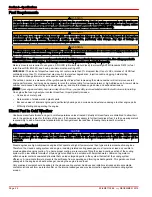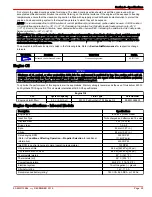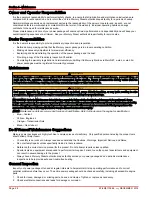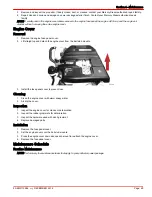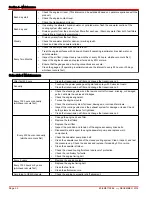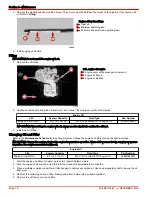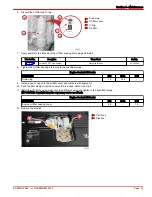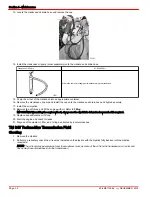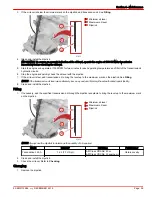
Section 2 - On the Water
Page 20
90-8M0113986
eng
DECEMBER 2015
•
The boat could move suddenly in a new direction. Such a sharp change in direction or turn can throw occupants out of their
seats or out of the boat.
•
A rapid reduction in speed. This will throw occupants forward, even out of the boat.
•
Impact damage to the underwater drive components, rudder, or boat.
Keep in mind, one of the most important things you can do to help reduce injury or impact damage in these situations is control
the boat speed. Boat speed should be kept to a minimum planing speed when driving in waters known to have underwater
obstacles.
After striking a submerged object, stop the engine as soon as possible and inspect the drive system for any broken or loose
parts. If damage is present or suspected, take the power package to an authorized dealer for a thorough inspection and
necessary repair.
The boat should also be checked for any hull fractures, transom fractures, and water leaks.
Operating with damaged underwater drive components, rudder, or boat bottom could cause additional damage to other parts of
the power package, or could affect control of the boat. If continued running is necessary, do so at greatly reduced speeds.
!
WARNING
Operating a boat or engine with impact damage can result in product damage, serious injury, or death. If the vessel
experiences any form of impact, have an authorized Mercury Marine dealer inspect and repair the vessel or power package.
Conditions Affecting Operation
Weight Distribution (Passengers and Gear) Inside the Boat
Shifting weight to rear (stern):
•
Generally increases speed and engine RPM
•
Causes bow to bounce in choppy water
•
Increases danger of following wave splashing into the boat when coming off plane
•
At extremes, can cause the boat to porpoise
Shifting weight to front (bow):
•
Improves ease of planing
•
Improves rough water ride
•
At extremes, can cause the boat to veer back and forth (bow steer)
Bottom of Boat
To maintain maximum speed, ensure that the boat bottom is:
•
Clean, free of barnacles and marine growth.
•
Free of distortion, nearly flat where it contacts water.
•
Straight and smooth, fore and aft.
Marine vegetation may accumulate when the boat is docked. This growth must be removed before operation; it may clog water
inlets and cause the engine to overheat.
Elevation and Climate
NOTE: Engines equipped with an Engine Control Module (ECM) reduce the effects of changes in elevation and climate by
automatically adjusting fuel flow for weather conditions and elevation. ECM controlled engines, however, do not compensate for
increased loading or hull conditions.
Elevation and climate changes affect the performance of your power package. Loss of performance can be caused by:
•
High elevations
•
High temperatures
•
Low barometric pressures
•
High humidity
For optimum engine performance under changing weather conditions and high elevation, use a propeller that allows the engine
to operate at rated RPM at wide open throttle (WOT) with a maximum boat load during your normal boating.
In most cases, the rated RPM at WOT can be achieved by changing to a lower pitch propeller.
Summary of Contents for 92-8M0069603
Page 2: ......
Page 8: ...Page iv 90 8M0113986 eng DECEMBER 2015 ...
Page 68: ...Section 4 Maintenance Notes Page 60 90 8M0113986 eng DECEMBER 2015 ...
Page 84: ......



















